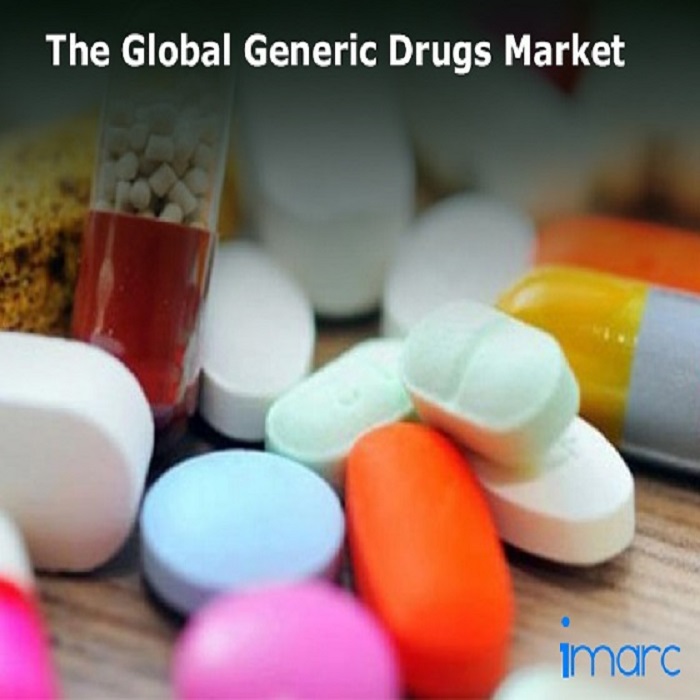USA biggest market for Generic Drugs reveals IMARC's Global Market Research
Some of the major generic drugs market players operating in the industry include Teva Pharmaceutical Industries Ltd. ADR, Mylan, Novartis, Pfizer, Sun Pharma, Fresenius, Lupin, Endo Pharma, Aurobindo Pharma and Aspen Pharmacare.

- Country:
- Canada
- United States
The leading global market researcher IMARC Group in its latest report on Generic Drugs has estimated the global generic drug market to reach a value of US$ 475 Billion by 2024, growing at a CAGR of 5.3% during 2019-2024.
In the report titled “Generic Drug Market: Global Industry Trends, Share, Size, Growth, Opportunity and Forecast 2019-2024”, the global generic drug market size reached US$ 340 Billion in 2018. Generic drugs are medicines that are made from the same active ingredients as the already marketed brand-name formulation. These drugs are identical in strength, dosage, form, route of administration, intended use, quality and performance to the branded drugs. However, they can be sold in the market with a different colour, shape or flavour. Since the generic drug manufacturers do not have to invest in drug research, drug development and marketing, these drugs are available at an extremely affordable price, unlike their branded counterparts. Furthermore, numerous companies replicate these generic variants, which increases the competition in the market, thus further reducing the average selling price of these medicines.
Some of the major players operating in the industry include Teva Pharmaceutical Industries Ltd. ADR, Mylan, Novartis, Pfizer, Sun Pharma, Fresenius, Lupin, Endo Pharma, Aurobindo Pharma and Aspen Pharmacare.
Global Generic Drugs Market Trends
The increasing prevalence of chronic and lifestyle diseases is one of the key factors that is influencing the growth of the market. Sedentary lifestyles, changing dietary patterns and hectic schedules have led to an increase in the number of such diseases on a global level. In addition to this, a majority of the population has started opting for generic drugs on account of the high costs associated with medication and the treatment of several chronic diseases. The generic variants deliver the same therapeutic effect as the brand-name counterparts at a more affordable price, thereby creating a positive outlook for the market. Apart from this, the patent expiration of key blockbuster drugs is another major factor that is contributing to the growing sales of these drugs. Furthermore, governments of several countries are taking initiatives to promote the use of generic drugs. For instance, the Government of India is actively engaged in the promotion of generic drugs with the aim to make quality healthcare affordable for all, especially those residing in rural areas. Additionally, increasing focus on research and development (R&D) activities to launch enhanced and more effective variants is also providing a boost to the market. On account of these factors, the market is expected to reach a value of US$ 475 Billion by 2024, growing at a CAGR of 5.3% during 2019-2024.
Market Summary
- Based on the therapy area, cardiovascular diseases represent the dominant market segment. Other major therapy areas include dermatology, genitourinary/hormonal, respiratory, rheumatology, diabetes and oncology.
- On the basis of the drug delivery, the market has been divided into oral generic drugs, injectables, dermal/topical and inhalers. Amongst these, oral generic drugs account for the majority of the total market share.
- Based on the distribution channel, the market has been bifurcated into retail and hospital pharmacies, wherein retail pharmacies exhibit a clear dominance in the market.
- On the geographical front, the United States holds the leading position in the market. Other major regions include China, Brazil, Germany, France, India, the United Kingdom, Japan, Canada and Italy.
(With inputs from IMARC Group)










